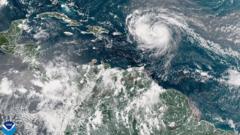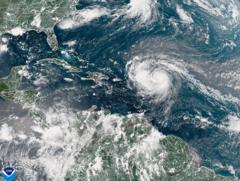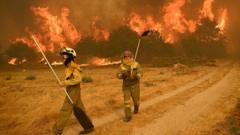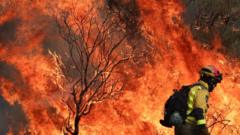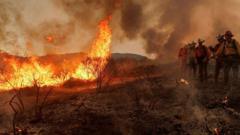With higher sea temperatures and a reduction in NOAA staffing, experts predict the Atlantic hurricane season may be more active than usual, raising concerns about preparedness amid cutbacks.**
Atlantic Hurricane Season Forecasts Heightened Amid Staffing Cuts at NOAA**
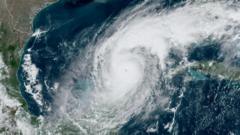
Atlantic Hurricane Season Forecasts Heightened Amid Staffing Cuts at NOAA**
Meteorologists warn of a busier than average hurricane season as recent budget cuts threaten forecasting capabilities.**
The upcoming Atlantic hurricane season is shaping up to be more active than usual, according to the latest forecasts from the National Oceanic and Atmospheric Administration (NOAA). Experts predict a range of six to ten hurricanes between June and November, a notable increase from the typical average. The prediction comes amid growing concerns over the impact of recent budget cuts on the agency responsible for monitoring such storms.
The combination of elevated sea temperatures, influenced by climate change, and neutral or weak La Niña conditions, which typically favor the formation of hurricanes, is driving this forecast. Over the past few years, advancements in hurricane forecasting have been made; however, scientists are worried that funding cuts under President Trump's administration, which have resulted in significant staff reductions, could undermine these developments. Experts indicate that fewer meteorologists and researchers could lead to less accurate predictions and insufficient preparations for the impending storms.
In the preliminary outlook for the 2025 Atlantic hurricane season, NOAA expects 13 to 19 named tropical storms, with 6 to 10 likely to become hurricanes, including potentially three to five major hurricanes classified as category three or higher. While this forecast is not as severe as last year's record-breaking season, it nevertheless exceeds the long-term average of 14 named storms annually.
Scientists attribute this season's heightened forecast to above-average sea surface temperatures across the tropical Atlantic. Currently, these temperatures are not as extreme as they were last year, but they continue to create an optimal environment for hurricanes to develop. Furthermore, meteorologists from Colorado State University echo NOAA's predictions, expressing concern over critical staffing shortages at NOAA's National Weather Service due to layoffs that could adversely affect operational capabilities.
Staff reductions have made it increasingly challenging for various NOAA offices to maintain their forecasting and alerting services, placing additional strain on the remaining personnel, with many facing potential burnout as they grapple with their reduced capacities. Additionally, the staffing shortage raises alarms regarding essential "hurricane hunter" flights, which gather on-site data directly from approaching storms to aid in managing landfall preparations.
Matt Lanza, a Houston meteorologist, articulates that less data collected about storm steering mechanisms could lead to inadequate forecasting, significantly heightening risks during this critical period. Daniel Swain, a climate scientist, worries that continued cuts may lead to devastating consequences far beyond the United States, eventually disrupting global forecasting efforts.
Despite these challenges, NOAA's acting administrator Laura Grimm assured the public that the agency possesses top talent and continues to prioritize advancements in weather forecasting. As the season approaches, continued monitoring of these developments will be crucial in ensuring public safety and preparedness in the face of impending storms.



